A new light is shining on one of the historical and artistic jewels in the heart of Piazza Navona in Rome: the Crypt of the Church of Sant’Agnese in Agone, which, after a recent restoration, has undergone an enhancement intervention through an artistic and architectural lighting project donated by Webuild Group. This initiative restored the Crypt’s intimate and evocative atmosphere through a sophisticated play of light and shadow.
The church of Sant’Agnese in Agone, imposing and full of history, is nestled among the ancient rooms and structures of the Stadium of Domitian, rising on the site where, according to tradition, the young Christian Agnes suffered martyrdom in 305 AD, during the persecutions of Emperor Diocletian.
The lighting project, carried out in collaboration with the Soprintendenza Speciale Archeologia, Belle Arti e Paesaggio of Rome, aims to enhance the spatial, architectural and artistic features of the Crypt, giving visitors an immersive experience.
The protection of the works of art is guaranteed through the use of LED sources, which emit UV radiation and heat to a reduced extent to ensure the preservation of the frescoes.

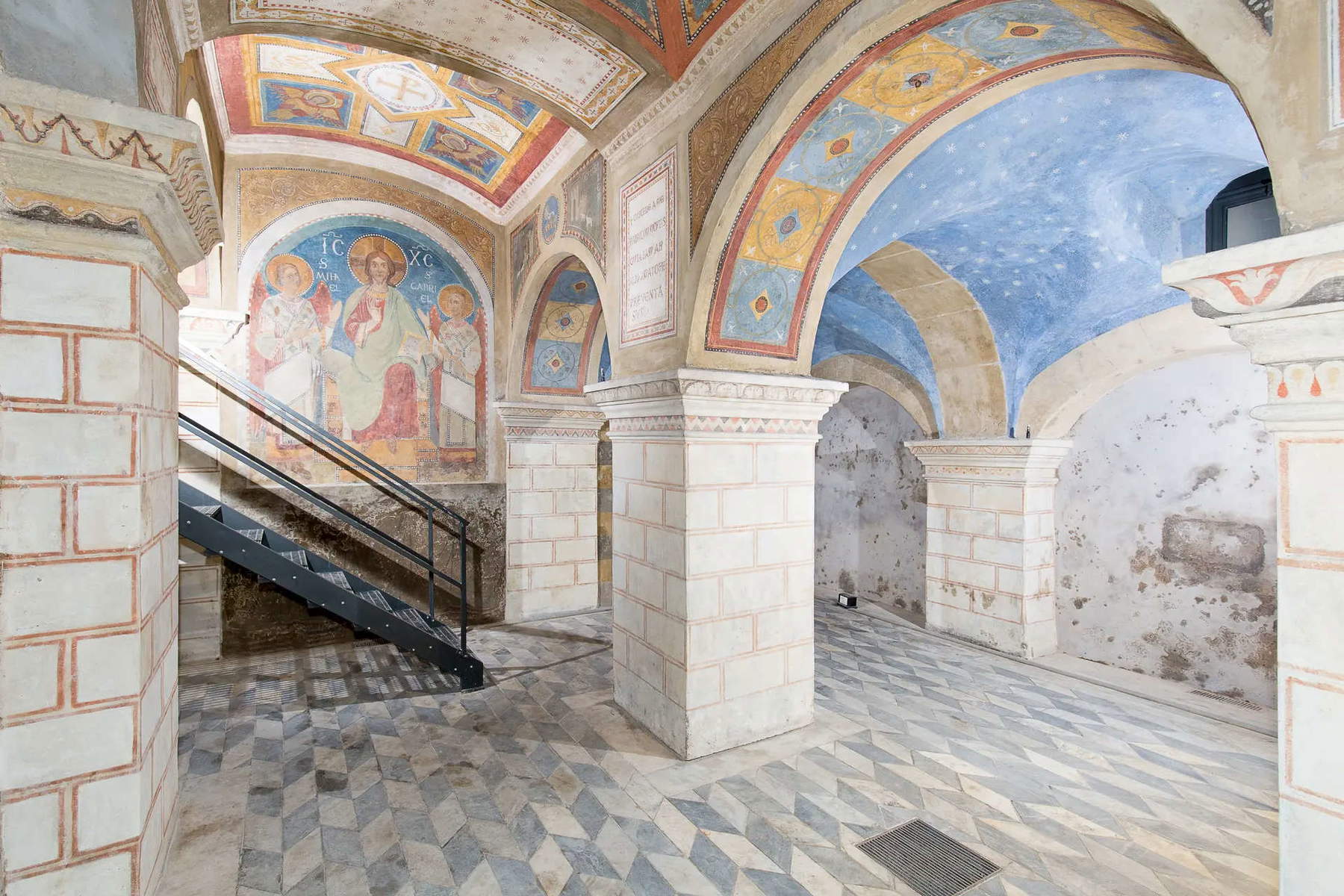
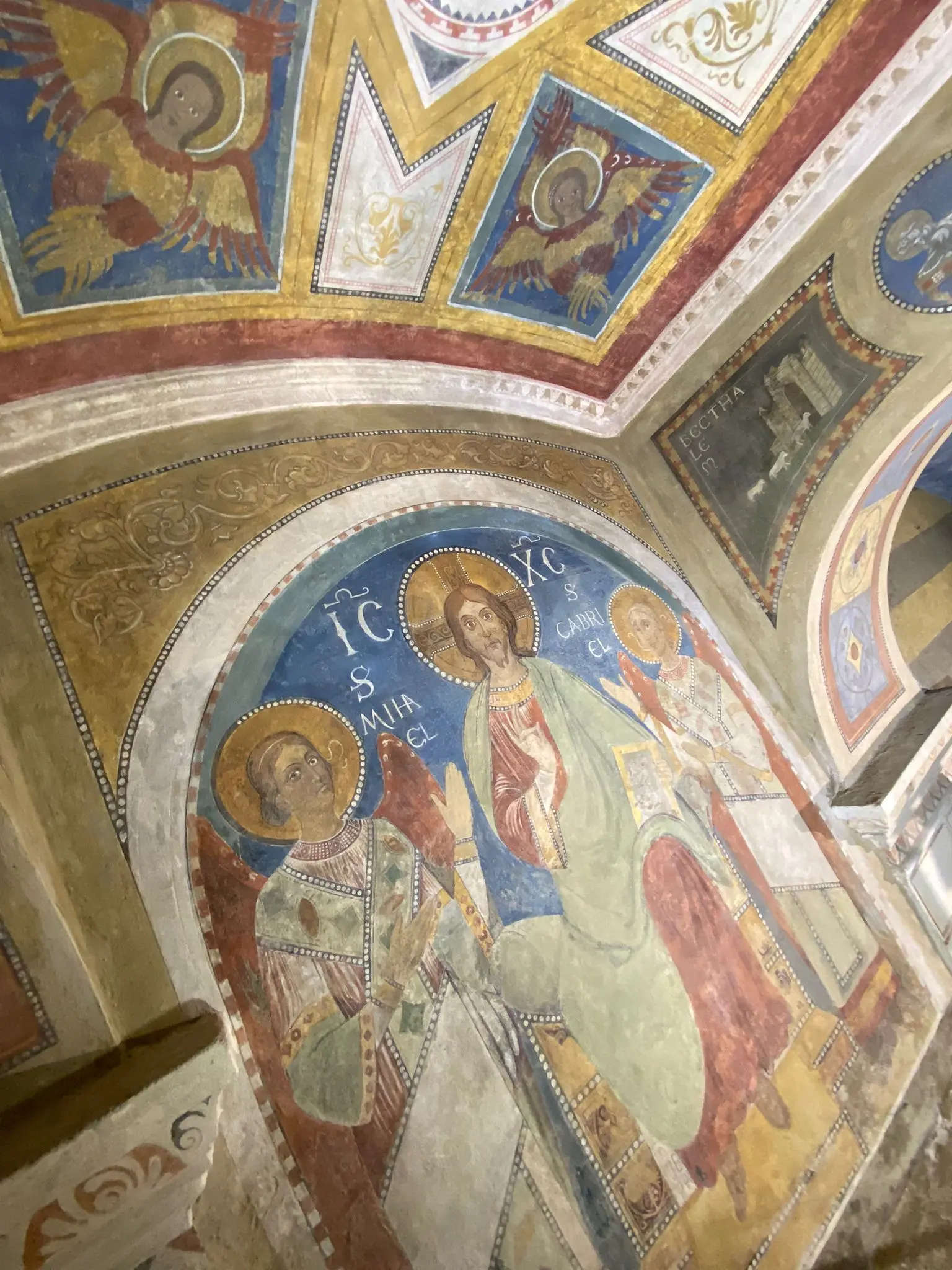
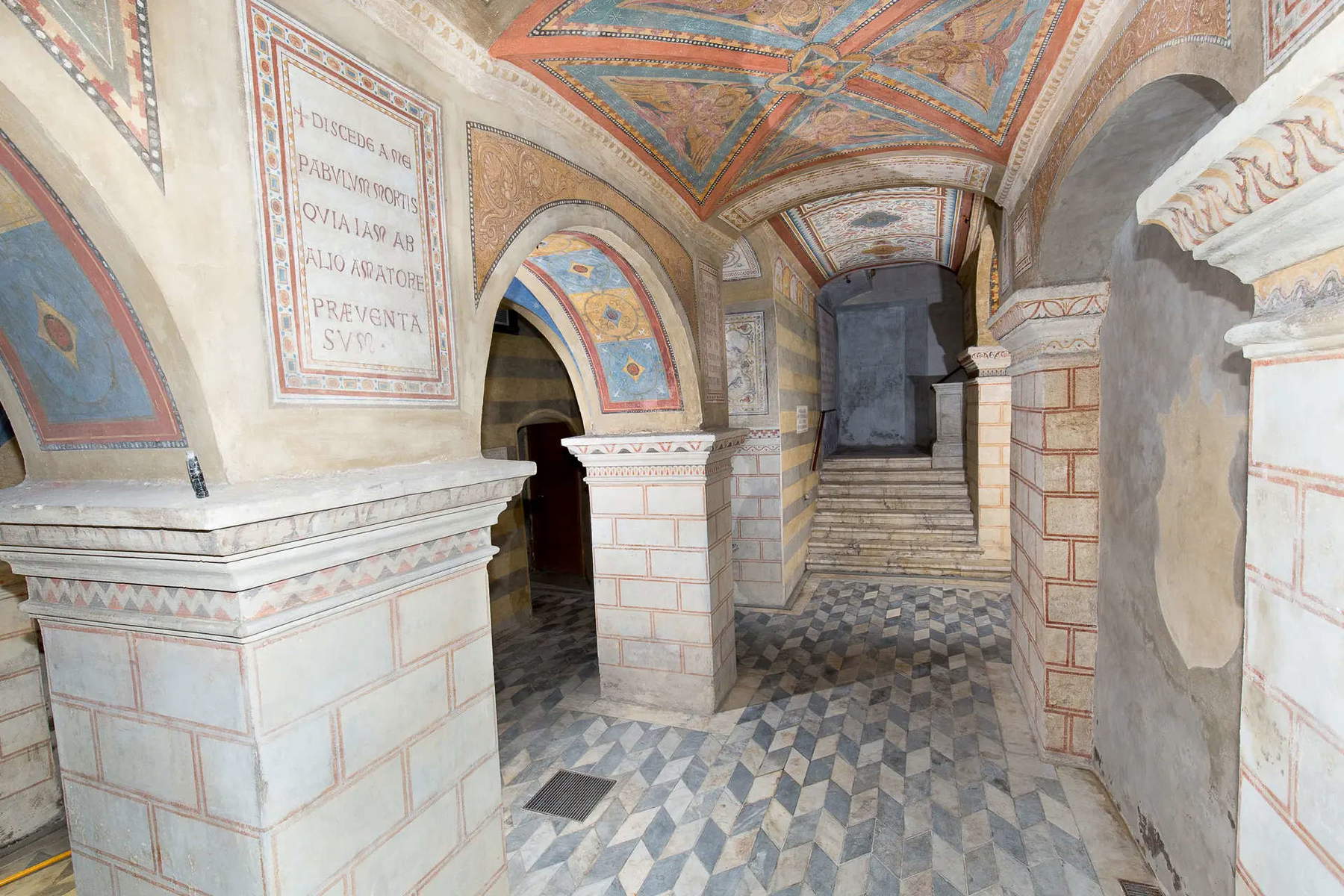
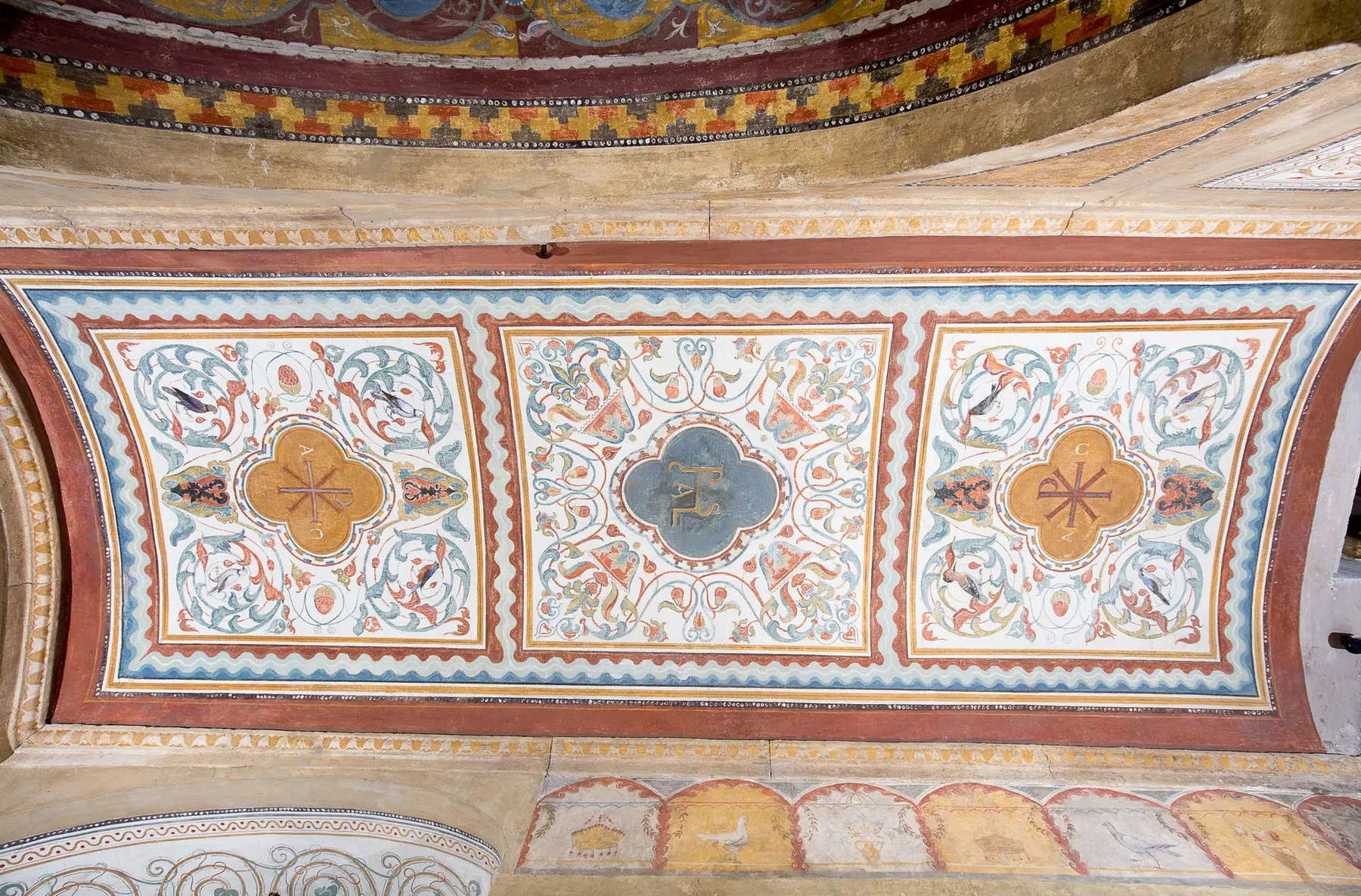
The Crypt of Sant’Agnese in Agone is accessible from the right side of the Chapel of Sant’Agnese in the Baroque church, via a staircase located behind the left pillar of the altar of Sant’Alessio. This place is traditionally considered the spot where 12-year-old Agnes was martyred: following her martyrdom, the area was turned into a small shrine in honor of the saint and soon became a pilgrimage destination.
The “cave” of St. Agnes, also known as sacellum infimum, is the only remaining part of the original church. It could be accessed either from the agonal field or through the steps behind the high altar, which led to the stadium fornices, visible in the plan of the ancient building drawn by Giovanni Battista Mola (Coldrerio, 1585 - Rome, 1665). The ancient little church, which stood in the fornixes of Domitian’s stadium, was already mentioned in the 8th century inEinsiedeln’s Itinerary with the phrase “Circus Flaminius ibi santa Agnes.”
Initially, the little church was officiated by Basilian monks, but later these were replaced by the Benedictines of Farfa, who became owners of the campus agonis, the “field” of the ancient stadium, from the 10th century. It was enlarged under the pontificate of Callistus II and consecrated in honor of the martyr on January 28, 1123. The church is mentioned as “ex criptis Agonis” in an 1145 parchment and again in the 1186 bull of Urban III, where St. Agnes is listed as the first among the branches of St. Lawrence in Damasus. Later, Pope Nicholas V assigned the church to the monasteries of Sant’Andrea in Flumine, near Ponzano, and San Silvestro on Mount Soratte, both Farfensi dependencies. Toward the end of the 14th century or the beginning of the 15th century, the church became a parish (St. Francesca Romana was baptized there in 1384), and on July 6, 1517, Pope Leo X elevated it to the title of cardinal.
The church faced the present-day Via dell’Anima, set back slightly from it to form a small square. Its structure has been handed down through a late 16th-century drawing by Pompeo Ugonio (1550 - Rome, 1614). The great architect Francesco Borromini (Bissone, 1599 - Rome, 1667), who in 1654 took over from Girolamo Rainaldi (Rome, 1570 - 1655) in directing the work on the church, was responsible for an initial restoration of the Crypt’s structures, which had been compromised by damp.
On the wall of the staircase leading down to the crypt is a 17th-century fresco depicting St. Agnes supported by the angel. Beneath the painting sits a marble slab engraved by Dionysius Philocalus, ordered by Pope Damasus (366-384) and later used as a pavement slab from the seventh century. In 1728, it was found and recovered by archaeologist priest Giovanni Marangoni. On the marble altar, framed by a tabernacle-like structure with two praying angels at the base, is a high relief depicting St. Agnes being led to martyrdom, made by Giovanni Buratti, based on a design by Alessandro Algardi, between 1661 and 1663. The tympanum is adorned with two other adoring angels. In the past, many authors attributed the work to Algardi, but recently it was discovered that the master only designed the work.
The crypt, subject to frequent flooding, was restored in 1885 by architect Andrea Busiri Vici (Rome, 1818 - 1911). In 1893, Eugenio Cisterna (Genzano di Roma, 1862 - 1933) decorated all the walls and vaults of these rooms in neo-medieval style at the behest of Don Gustavo Provveduti, Rector of Sant’Agnese, painting episodes from the life of the Saint and from the Apocalypse of St. John, following the style of early Christian art considered appropriate for those evocative spaces. The paintings were inspired by the life of the Saint and the Apocalypse of St. John, echoing those in the crypt of Anagni Cathedral. To prevent the paintings from being misunderstood as ancient, Giovanni Battista de Rossi, a famous archaeologist, dictated and had an inscription commemorating the decoration placed in the crypt. In 1885, Andrea Busiri Vici also restored the marble slab floor and two mosaic panels in opus sectile. Finally, the ancient oratory, with a medieval imprint evident in the two columns with Ionic capitals supporting the vaults and in the floor, still retains remnants of the cosmatesque decoration on the altar step.

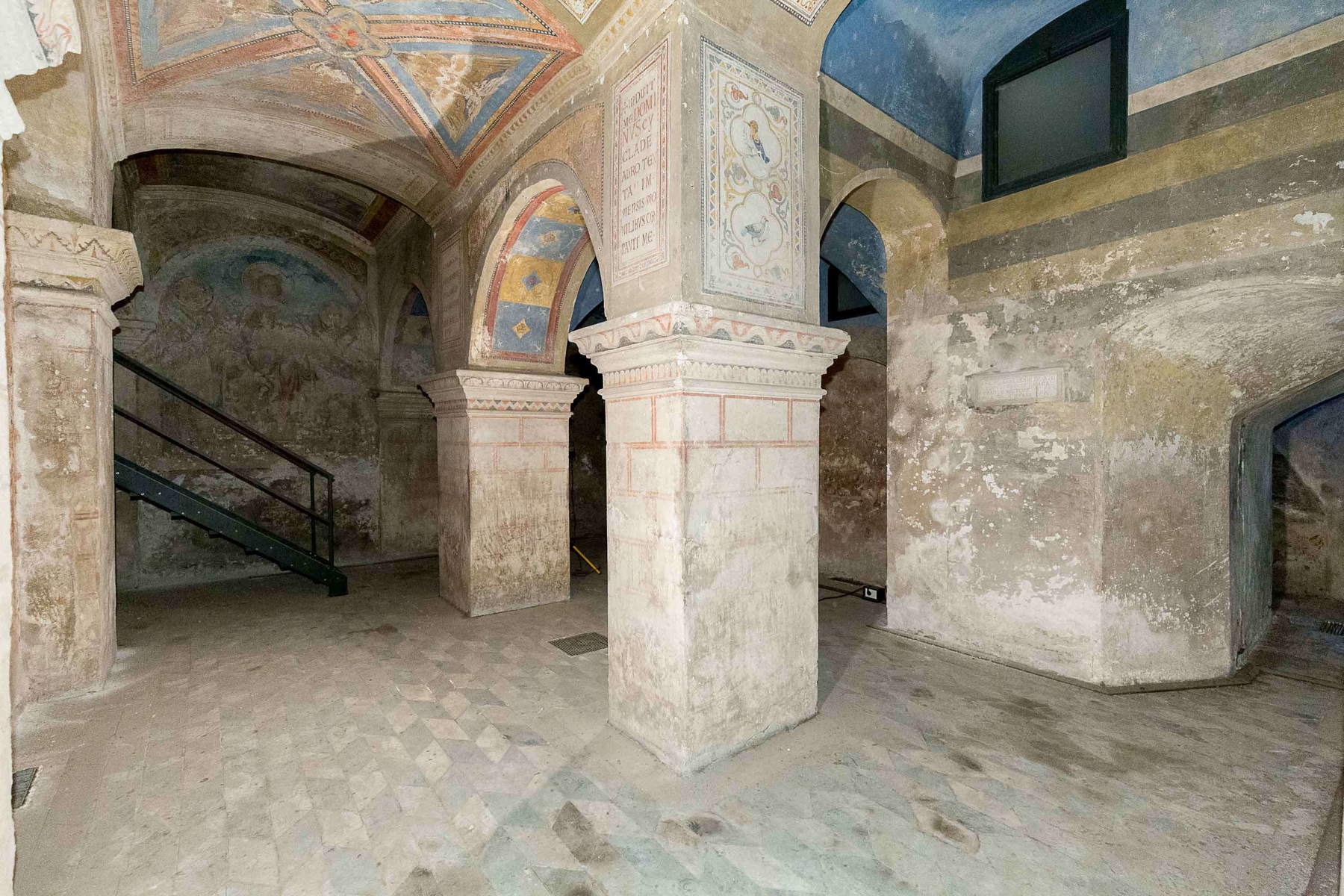
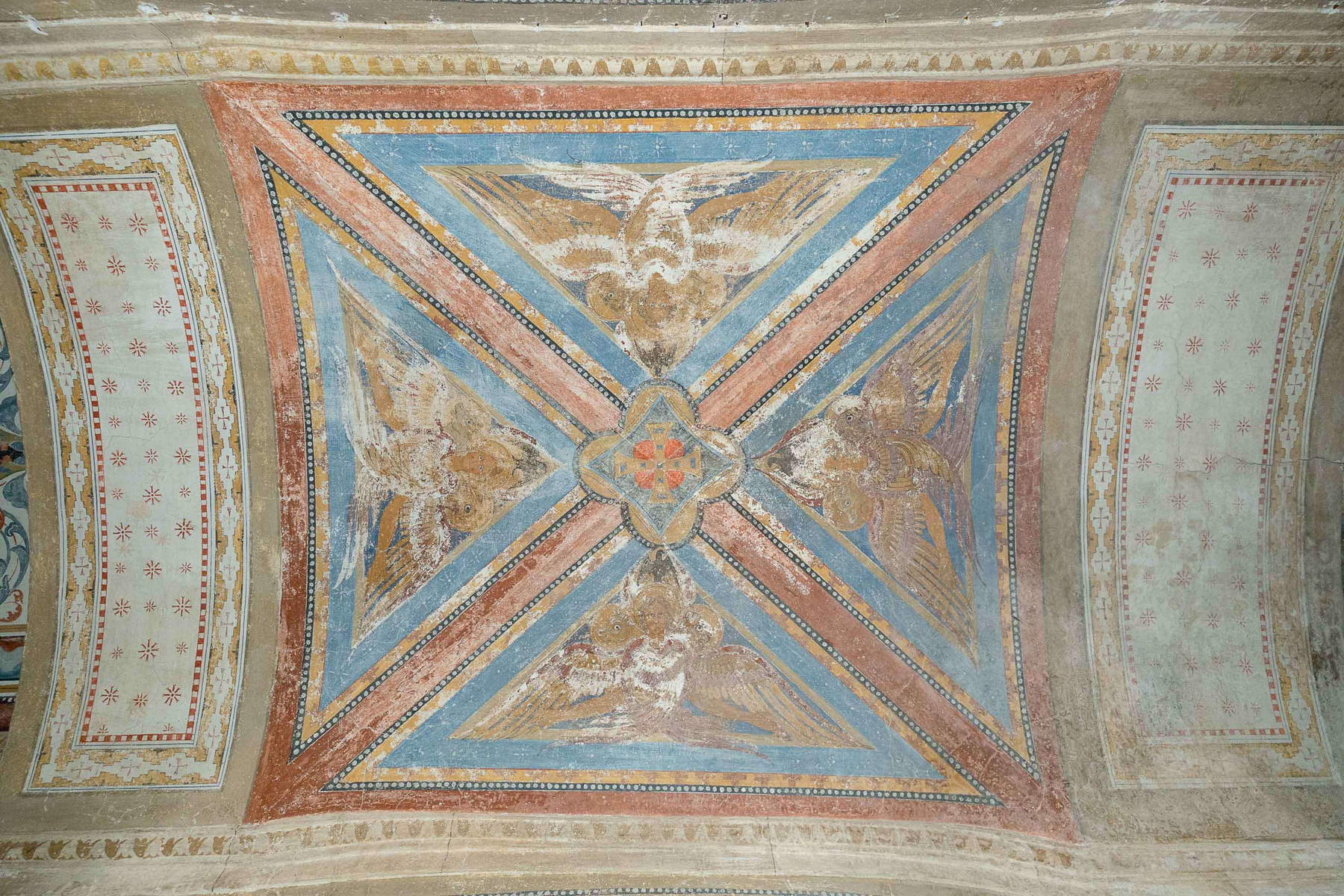

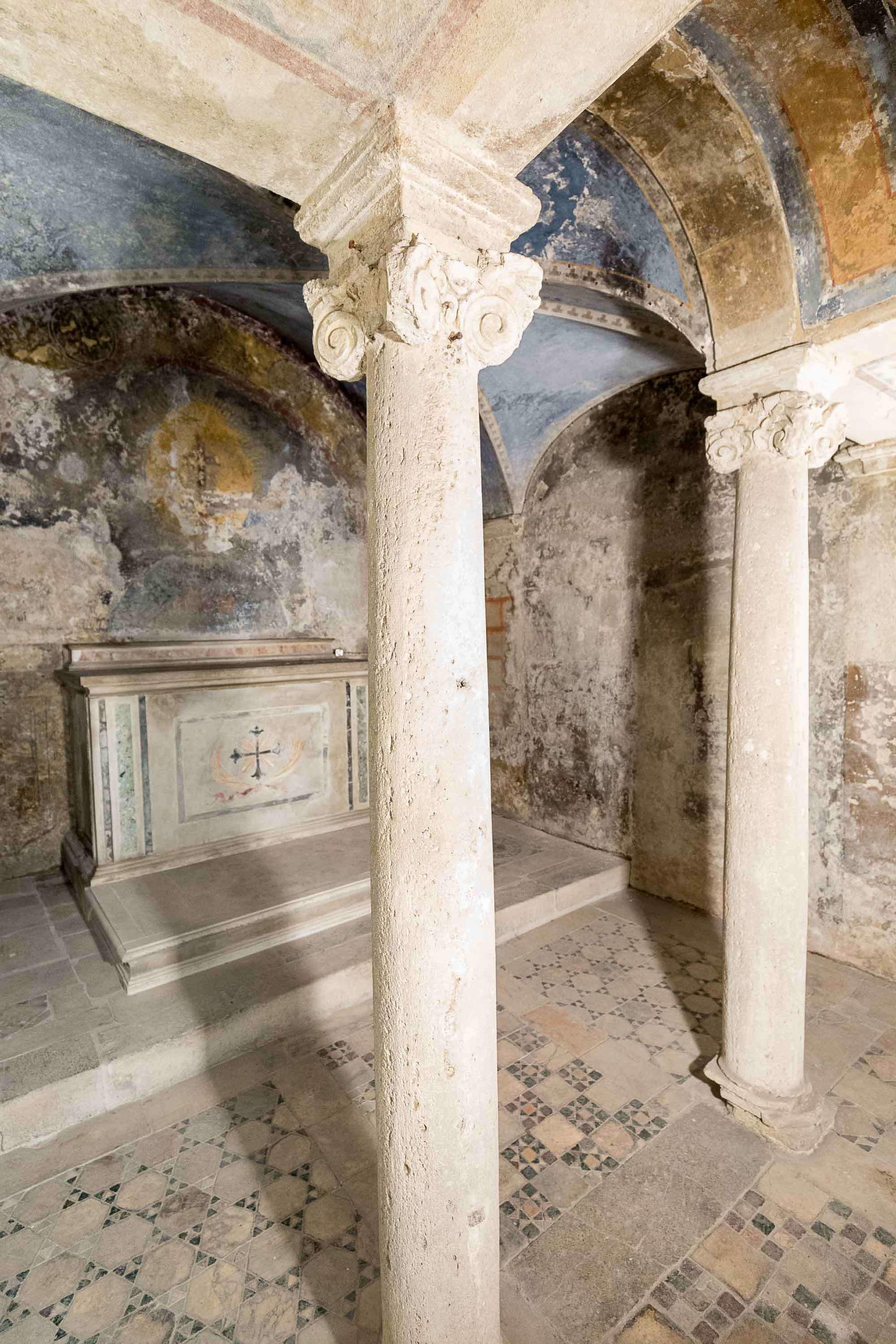
The Crypt consists of three distinct rooms: the Large Area, which includes the remains of the Stadium of Domitian, occupying most of the total space, and the Small Area, consisting of the two remaining small rooms. The latter part is particularly valuable as it contains the site considered by tradition to be that of the martyrdom of St. Agnes.
In 2017, at the initiative of the Rector H.E.R. Monsignor Paolo Schiavon, a thorough historical-scientific research was initiated to assess the state of conservation of the rooms and frescoes of the Cisterna present in the Crypt, which were in an advanced state of decay and were almost completely illegible.
In October 2018, an environmental sanitization, salient water neutralization and humidity stabilization system was installed, thanks to which humidity stabilization was finally achieved in 2020 , obtaining the authorization from the Soprintendenza Speciale Archeologica Belle Arti of Rome to start the restoration of the works and the decorative-iconographic apparatus that adorns the walls and vaults of the Great Area of the Crypt.
The restoration, including consolidation, cleaning, integration of the pictorial surfaces and aesthetic restitution of the paintings and artifacts in the Crypt, was completed with results deemed excellent in December 2022.
In 2023, the construction of the lighting system donated by Webuild Group was started,inaugurated in spring 2024. On the other hand, the restoration of the Small Area of the Crypt, which includes the Martyrdom Sacellum, is scheduled to be completed for the Jubilee 2025.
This initiative is part ofWebuild’s Culture Agenda, through which the Group has promoted more than 30 exhibitions and cultural events around the world, publishing 19 books in the past 10 years, and which includes the immersive installation ’Building According to Beauty: the Stations of Art in Naples,’ on display until next June 16 at the Scuderie del Quirinale in Rome, on the occasion of the exhibition ’Napoli Ottocento.
 |
| From restoration to new lighting. The rebirth of the Crypt of the Church of Sant'Agnese in Agone. |
Warning: the translation into English of the original Italian article was created using automatic tools. We undertake to review all articles, but we do not guarantee the total absence of inaccuracies in the translation due to the program. You can find the original by clicking on the ITA button. If you find any mistake,please contact us.